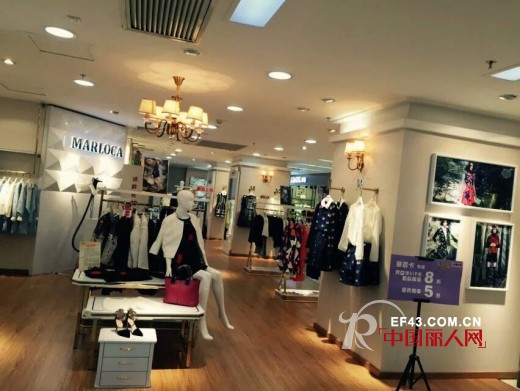On October 13, 2017, at the conference of the China National Tourism Research Institute’s Mid-Autumn Festival holiday travel data and the “Annual Report on China’s Outbound Travel Development 2017” hosted by the China Tourism Institute, China Telecom Corporation and the National Tourism Administration’s Data Center Tourism Big Data Joint Lab The "National Day Grand Mid-Autumn Holiday National Drive by Car" report was issued.

The report uses China Telecom’s full-time, massive-scale data and nearly one million survey results to systematically analyze large-scale travel data in the 2017 National Day and Mid-Autumn Festival holiday travels in China in terms of overall situation, visitor characteristics, and travel characteristics. Explained.
National Day Mid-Autumn Festival National Drive (Cross-City) Big Data Presentation
The "11" Golden Week tourism market is unusually hot
Compared with the "Eleventh" plane and train tickets that were difficult to obtain in previous years, more and more people began to choose to travel by car, regardless of whether they are traveling or visiting relatives. During the double festivals in 2017, 32.13 million tourists traveled by car (cross-city) across the country. Except for a large number of tourists, the average travel time of self-driving tourists during the double festival was 54.44 hours, and the average travel distance was 234.87 kilometers. It can be seen that compared to the previous National Day holiday in previous years, this year's double holiday has provided visitors with more abundant travel time, and the travel distance has increased accordingly.

Traveling by car traveled across the province to account for 32% of tourists, and Guangdong became a self-drive province
During the double festival period, Guangdong Province made 3.29 million trips to become the largest province of self-driving trips in the country, with 3.15 million trips in Jiangsu, 2.33 million trips in Sichuan, 1.76 million trips in Shandong and 1.56 million trips in Henan. To five.

It can be imagined that traveling by car is inextricably linked with the population density of the region, economic development, surrounding supporting infrastructure and road construction, and car ownership. In addition, the top five provinces in this driving tour are Beijing, Shanghai, Tibet, Yunnan, and Fujian.
The average consumption level of double-drivers is high. Most self-driving tourists are middle-income people.
According to the results of a million-level survey, we have learned and analyzed the consumption of self-driving tourists during the eleventh year of this year. The results show that the majority of self-driving tourists are middle-income groups, and the average per capita consumption of self-driving tourists reaches 1,892 yuan, of which about half are consumed. Pay for cash.

An Analysis of the Features of Self-driving Tourists during the National Day Mid-Autumn Festival
Excursion to the crowd to see if the driver is the companion around you
From the perspective of gender structure, men occupy the main position of self-driving crowds; from the age structure, the self-drivers are mostly young and middle-aged; and the habitual composition of tourists is dominated by the urban population.

Self-driving travels mostly in families, with different themes for travel purposes
Most of the tourists who traveled by car chose to drive their own vehicles, and the number of tourists was more than 2-5, indicating that they may travel by couples, parents and families. This part of the population may be office workers, travel time is mostly concentrated on short weekend trips on holidays or weekends. In addition to excursions, the purpose of excursions is to visit relatives and friends.

An Analysis of the Characteristics of the Traveling Trip in the National Day Mid-Autumn Festival
Analysis of the overall travel characteristics of the country
During National Day, about 47% of tourists choose to travel three days before the National Day. Among them, the maximum number of departures on October 1 reached 5.37 million.

From the point of view of staying time, with the deepening of the long vacation, the time spent on traveling by car has gradually decreased. The average length of stay for tourists who departed on September 30 was nearly 90 hours, and the time for tourists who departed on October 7 was reduced to 19%. Hours or so.

From the point of view of travel time and distance, about 58% of tourists travel within a distance of 80-400 kilometers; about 62% of tourists travel within 48 hours.
The five largest districts in East China have the most trips by car and the highest proportion of overnight stays.

In the five regions, the number of self-driving tourists in East China reached up to 6.92 million, accounting for about 22%, followed by South China with 6.09 million, accounting for 19%, and the number of self-driving tourists in northeastern China was the lowest, only 1.43 million.
The proportion of overnight visitors staying in East China was the highest, reaching 86.3%, followed by 75.2% in the southwest, and lowest in Huazhong, only 49.2%.
Analysis of Typical Urban Trip Characteristics
The five typical sample cities (including Beijing, Hangzhou, Zhengzhou, Guangzhou, and Xi'an) have the highest proportion of self-driving tourists who spend the most nights in Beijing. The overnight rate is 81.54%, followed by 75.33% in Zhengzhou, 71.52% in Xi’an, and Hangzhou. 70.98% and 69.42% of Guangzhou City.
Self-driving tourists traveled more than 96 hours, and Beijing accounted for the most, reaching 41.11%. In contrast, Zhengzhou City's self-driving tourists spent the most time in 13~24 hours, reaching 18.73%.
Among the five typical cities, 20% of Beijing's self-driving tourists traveled more than 800 kilometers, accounting for the highest proportion. Guangzhou, where travel distances were within 50 kilometers, accounted for the highest proportion, accounting for 20%. In contrast, Beijing has a relatively long distance from traveling by car, and the other four cities are closer by car.
Among the five typical cities, the analysis found that self-driving tourists traveled mainly to surrounding cities. Among them, the top three cities in the number of self-driving tourists in Beijing were Tianjin Baoding and Langfang; The cities of Xianyang, Weinan, and Baoji are the cities; Kaifeng, Luoyang, and Zhoukou are the top three cities in terms of tourist destinations; Zhengzhou, Foshan, Qingyuan, and Shenzhen are the top three cities in Guangzhou; The top three destinations for visitors are Shaoxing, Shanghai and Jiaxing.

The big data report helps the government tourism department to deepen its understanding of the market and tourism behavior by accurately portraying the 11th self-driving tourist portraits, consumption levels and location-based flows, trajectories, and route information, etc., as the main bodies in the tourism industry to manage and serve , marketing and research provide more powerful data support. Under the premise of giving play to the basic role of the market, the government will be assisted to make necessary interventions and decisions, and the relevant departments shall be given full play in the role of macro regulation and control. A sound system of laws and regulations shall be established to comprehensively regulate the market competition environment. Finally, it will meet the needs of the tourism industry in the information age to upgrade more quickly and realize the importance of guiding and guiding the development direction of self-driving tourism.

document.getElementById("bdshell_js").src = "http://bdimg.share.baidu.com/static/js/shell_v2.js?cdnversion=" + new Date().getHours();
Wind And Solar Hybrid Controller
Generator Set Automatic,Generator Automatic Regulator,Wind Solar Hybrid Controller,Wind And Solar Hybrid Controller
Changzhou Fuyuan Wind Power Technology Development Co., Ltd. , https://www.wind-turbines-generator.com
برچسب:
،
ادامه مطلب
بازدید:




























 Although China has nearly 6,000 hardware and tools manufacturers, it is still not a strong country. From the historical perspective, the world hardware tool manufacturing industry has experienced a process of transfer from Europe and the United States to Japan, Taiwan, and India, and from Japan, Taiwan, and India to China. In the coastal Yangtze River Delta, Pearl River Delta and other regions, most of China’s hardware and tool companies still rely mainly on processing of export-oriented trade, or sales for many large companies such as the United States and Japan.
Although China has nearly 6,000 hardware and tools manufacturers, it is still not a strong country. From the historical perspective, the world hardware tool manufacturing industry has experienced a process of transfer from Europe and the United States to Japan, Taiwan, and India, and from Japan, Taiwan, and India to China. In the coastal Yangtze River Delta, Pearl River Delta and other regions, most of China’s hardware and tool companies still rely mainly on processing of export-oriented trade, or sales for many large companies such as the United States and Japan. 


